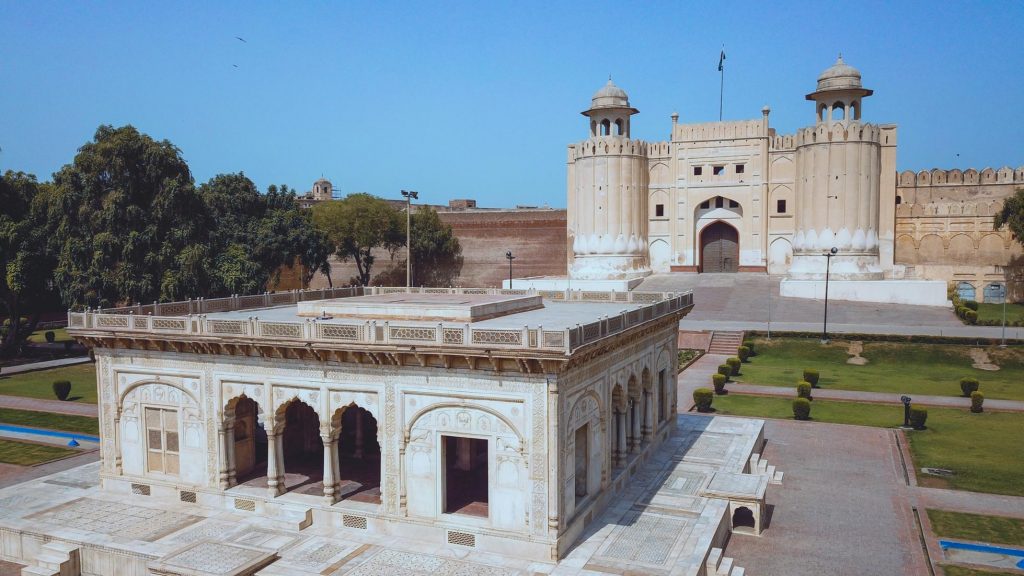Urbanization can be harsh and rather cruel when it comes to age-old heritage sites which stand as a city’s jewels. It erodes away the inheritance of cultural lineage, identity and history that belongs to future generations, its rightful recipients.
One of the finest examples of Mughal architecture in the city of Lahore, is the Lahore Fort, a UNESCO World Heritage Site in Pakistan. Built in the historic Walled City, this grand citadel is spread over 20 hectares, dating back to 1556 when it was spearheaded under the watchful eye of the Mughal Emperor, Akbar.
Because of its magnificent repertoire of Mughal architecture and exquisite craftsmanship, the fort was designated a UNESCO World Heritage Site in 1981.
However, the picture wall, which originally served as the fort’s private entrance, is one of the most prominent architectural features of the site and is partly responsible for its ‘world heritage’ listing. Measuring approximately 1,560 feet in length and 60 feet in height, the wall encompasses over 100,000 square feet of ‘decorative surface,’ and is considered one of the largest murals in the world.
Featuring over 3,000 glazed tile mosaics, fresco panels, intricate filigree and brickwork, the wall also encompasses vivid and colorful illustrations of angels and demons, humans and birds, hunting and battle scenes, not to mention plentiful floral and geometric motifs.
However, over time, certain sections of the picture wall fell to ruin. This has been primarily due to the wall’s waterspouts (installed during the British Raj), which caused a discharge of monsoon rainwater, resulting in deep erosion and damage.
At the start of 2018, the conservation of the fort’s iconic picture wall was spearheaded by the Aga Khan Cultural Service-Pakistan (AKCS-P), in partnership with the Walled City of Lahore Authority (WCLA). From in-depth investigations and assessments of the sections featuring the most wear and tear, a thorough restoration plan was devised and subsequently executed.
“In Pakistan, conservation projects usually overlook the vital role of science in heritage preservation,” states Zeina Naseer, an AKCS-P Conservation Scientist. “The conservation of the picture wall, however, has heavily relied on utilizing innovations and technologies in conservation science. Good conservation practice demands a harmonious union of science and artistry. It compels us to recognize that the master artisans of the past, like those who created the picture wall, were not only artists, but also scientists, engineers, and architects. Today, the duty of the conservator is not just to preserve their legacy but also to revive that lost wisdom.”
Since the commencement of the picture wall’s restoration, a truly groundbreaking project, the initiative is set to finally conclude towards the tail-end of this year, after seven laborious years.
Working in tandem with artisans in the city, Tausif Khawaja, the CEO of the Aga Khan Cultural Services in the country, mentioned that the picture wall project couldn’t have been executed without the inclusion of skilled craftspeople from local communities.
“Employing [artisans] gives them an opportunity to receive training which enables skill transfer to future generations. This helps to add to the skillset of both skilled and semi-skilled individuals, allowing them to become more economically mobile.”
Uncovering significant archaeological structures from the Sikh and British periods, discovered during the delicate excavation work right at the start of the project, these pieces are now part of a curated exhibit for the fort’s visitors.
“Restoring the picture wall has been an intense and humbling journey…technically, emotionally, and intellectually. This wasn’t just restoration, it was a test of intuition, patience, and a deep respect for heritage,” Wajahat Ali, the Director Conservation & Design Insights at the AKCS-P, reveals.
“We chose to take our time, even when there was pressure to go faster, because heritage deserves thoughtful care, not hurried short-cuts.”

